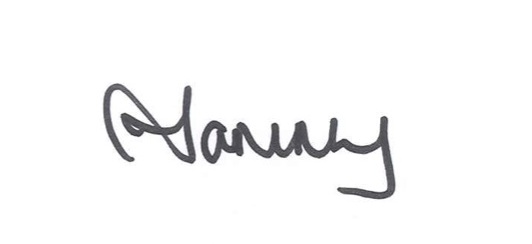
Procrastination sucks! For a neurotypical brain it’s annoying and stressful, and from what I understand about neurodivergent brains, it is even more painful.
Let’s face it, life is helpful in that there is always plenty to keep you busy. You can legitimately while away your available hours doing ‘stuff’ without ever getting to any important/critical/strategic tasks.So you’re procrastinating, but you can tell yourself that you’re doing work that needs to be done at some point, so it’s not really procrastinating, because you have been productive at least …
I’ve been there, done that. And I’ve almost always regretted it when the work that needed to be done (ie – the important work), ended up being done as a rush job at the last minute.
So I have been having a good look at this pattern to see if there isn’t a way to break it. Here are my seven steps on how to beat procrastination and inertia:
Step one: have a plan
Always, always plan what you want to achieve the night before.
Start the day with a clear idea of what you want to achieve. Sitting down at your desk without a plan makes it far too tempting to do that other stuff – and before you know it, half the day has gone by without anything particularly tangible to show for it.
James Clear suggests this planning method:
One of the best productivity systems I have found is also one of the most simple. It’s called The Ivy Lee Method and it has six steps:
-
At the end of each work day, write down the six most important things you need to accomplish tomorrow. Do not write down more than six tasks.
-
Prioritize those six items in order of their true importance.
-
When you arrive tomorrow, concentrate only on the first task. Work until the first task is finished before moving on to the second task.
-
Approach the rest of your list in the same fashion. At the end of the day, move any unfinished items to a new list of six tasks for the following day.
-
Repeat this process every working day.
Step two: energy energy energy
Know your energy levels. Some people work best in the morning, some at night. Know yourself, and schedule the work that requires good brain attention at the times of highest energy. You can always do that ‘other stuff’ during times of lower energy. Neuroscientist Andrew Huberman, has a great toolkit of ways to dial into your energy, including how to increase your dopamine, and some easy and quick tools to increase focus including using brown noise and NSDR.
Step three: chunk it up into manageable pieces
Sometimes the overall task is too big and daunting and it is hard to know where to start. If you have a big project or task, break it down into more specific SMART tasks (specific, measurable, achievable, realistic and timebound), then schedule those tasks. Diarising ‘write book’ is unlikely to yield too much action, but ‘write 500 words of chapter one by lunchtime tomorrow’ will definitely get you on your way.
There are some good tips like time blocking that might work in this space (hey, if it works for Elon Musk, there must be something to it).
Step four: have an honest chat with yourself
If you find yourself getting stuck doing something, either avoiding it or putting it off with some pretence or other; spend some time doing some active pre-thinking about the task. At the risk of sharing too much information, I often do this thinking in the shower or bath – when I can properly reflect on it without being interrupted. Ask yourself:
- What is the block to doing the task? Is the task is too daunting? Are you worried about some component of it (for example – is it an unpleasant task?) Are you scared that someone will reject you/your proposal? Do you need to have a stern chat to yourself around the implications of not doing it? Do you need some external help to get you through your blocks? Are you self-sabotaging your potential success? Somehow, naming your blocks and fears can help you come up with a plan for how to manage them.
- What will it feel like when you have completed it? Take a moment to revel in that feeling. Is it getting you closer to a bigger goal or success?
- What’s the first thing you would need to do to get moving on it? That is, in your mind, start writing the first paragraph you’d need to write, or what you’d say in the first phone call. Imagine yourself doing this very first thing – and then what’s next from there? Often, just thinking through the specific steps in detail seems to kick up my energy level and makes it easier to get me moving.
Step five: habits
James Clear, best selling author of Atomic Habits has written this fabulous article on how to overcome procrastination. Here are some of his tips:
“Temptation bundling is a concept that came out of behavioral economics research performed by Katy Milkman at The University of Pennsylvania. Simply put, the strategy suggests that you bundle a behavior that is good for you in the long-run with a behavior that feels good in the short-run.
The basic format is: Only do [THING YOU LOVE] while doing [THING YOU PROCRASTINATE ON]. Eg: Only listen to audiobooks or podcasts you love while exercising
Option 2: Make the Consequences of Procrastination More Immediate. ..If you commit to working out with a friend at 7 a.m. next Monday, then the cost of skipping your workout becomes more immediate. Miss this one workout and you look like a jerk. Another common strategy is to use a service like Stickk to place a bet. If you don’t do what you say you’ll do, then the money goes to a charity you hate.
Option 3: Design Your Future Actions. One of the favorite tools psychologists use to overcome procrastination is called a “commitment device.” Commitment devices can help you stop procrastinating by designing your future actions ahead of time.
Option 4: Make the Task More Achievable. Making your tasks more achievable is important for two reasons.
- Small measures of progress help to maintain momentum over the long-run, which means you’re more likely to finish large tasks.
- The faster you complete a productive task, the more quickly your day develops an attitude of productivity and effectiveness.
I have found this second point, the speed with which you complete your first task of the day, to be of particular importance for overcoming procrastination and maintaining a high productive output day after day.”
Step six: reward yourself
There’s good evidence that if the task is boring or repetitive that rewarding yourself with an extrinsic reward works. So if you just have to do something think about what you can reward yourself with once it’s completed.
Step seven: just do it
Which leads me to this: if the planning and the thinking don’t work, then Just Do It.
Action begets action; movement begets movement.
It doesn’t need to be perfect, but at least you will have started. And often, it is just the motion of starting that is all that is necessary to overcome the inertia caused by procrastination. Set an alarm for five minutes and get going.
“The difference between how I feel before my first set in the gym and how I feel after my first set is enormous.
You don’t even need a full workout (or work session, etc.) to feel good again. You are 5 minutes away from putting your day on a completely different trajectory.”
James Clear
The Takeaway
There’s plenty written on procrastination (just make sure you’re not reading it all as a way of procrastinating yourself) – but there are some useful science based tips and tools in the steps above.
For me, my go to are:
- The list – having a plan
- Brown noise – using my headphones with brown noise that is targeted at concentration
- Just getting started
More Resources
Andrew Huberman – ADHD and focus
Flying Solo – Procrastination articles
Why Wait – the Science behind procrastination
Want more?
If the above has whetted your appetite, and you’re keen for more.. Here are some ideas:
Does leadership interest you? You can sign up to my FREE seven day “Be a Better Boss Challenge” by clicking here. And you can click here to buy my book.
Want to chat? Click here to get in touch.
Want some help in meeting your goals? Sign up to the permission to dream programme, by clicking here.
Want more to read? You can read any of the 300+ blog posts on this site, by clicking here.
See you soon,


